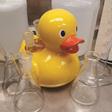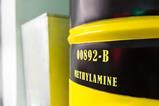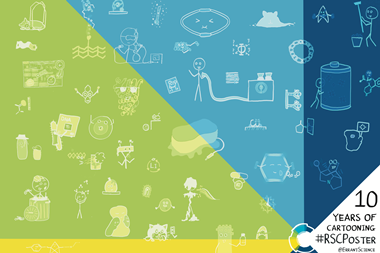Even in this online era, some things are still best kept on paper

There is always a moment in a meeting at my company where someone will ask a simple factual question: ‘What is the density of bromobenzene, anyway?’ Chemists love these questions. What happens after the question has been asked has definitely changed over time, though. 50 years ago, someone would probably have reached for a book – the Merck Index, perhaps.
These days, we’re more likely to reach into our pockets for a phone. Typing ‘density of bromobenzene’ into Google is likely to bring you a highlighted section of Wikipedia or perhaps information from the Millipore-Sigma website. (That’s what tends to happen in meetings that I’m in, except when someone at the table says ‘1.5 g/mL, naturally’. That person gets to look smug while we all look at them with a combination of surprise and admiration when their statement is proven correct.)
When I was in graduate school 20 years ago, if we had a simple question about a physical property of a chemical, the reference most people would have reached for was the Aldrich catalogue. These thick books were a staple of every chemists’ desk (and served as a fantastic advertisement for Sigma Aldrich). I enjoyed flipping through them looking for unusual structures and the inevitable peals of laughter at the cost of 5mg of some random ligand for thousands of dollars.
I wonder at what point we’ll stop having printed material around in chemistry labs. I like to think of myself as a reasonably adept person when it comes to electronics, but I also really like paper and books. There’s a lot of printed paper tacked to the walls above my two monitors.
Top of the charts
I bet that if you looked into an organic laboratory, the piece of paper most commonly tacked on the wall or taped to a desk is the classic NMR impurities chart. If you’re reading this column at your desk in the lab, a copy of that chart is probably within arm’s length or pasted above the monitor in your NMR instrument room, likely with a few solvents highlighted. I don’t think these will be put on phones, although I suppose NMR software (with clever AI help?) can spot those impurities in the spectra on the screen.
My favourite charts that I did not know about until I began working in chemical manufacturing are the charts around material compatibility of reactor materials and chemicals. When we’re in the laboratory, we mostly work in glass. There are a few chemicals where we know that glass is absolutely the wrong material to use – hydrofluoric acid, for instance. However, the plant has a panoply of different materials of construction. Not only is there glass or ceramic, there are also metals such as stainless steel, Hastelloy and also the occasional nickel based metal, Inconel. Don’t forget the various elastomers that make up seals and gaskets.
In my favourite book The Pilot Plant Real Book, there is a very handy table that lists the compatibility of different metals with various reagents. Want to know how resistant 316 stainless steel is to 100% sulfuric acid? Look in that book, and you’ll find that it is C-rated (softening, loss of strength or swelling may occur) and not a great idea.
Of course, a rating in a book is not a substitute for looking at the exact reaction conditions in the laboratory. It’s a guide, and a good way to double check your intuitions. Coupon testing, where a small piece of the metal with a known weight is soaked overnight (or longer) in whatever chemical you’d like to test is a better way to truly understand the material compatibility of your reactor surface with your reaction conditions. Don’t have much of a Hastelloy C coupon remaining after an overnight soak at room temperature? If so, it’s probably not a good idea to run that reaction at reflux in a Hastelloy reactor.
There’s another chart that lives on the walls of laboratories that should not be neglected – the glove compatibility chart. You might be tempted to simply wear the same kinds of gloves that you prefer to wear. It’s far wiser to briefly glance at a glove compatibility chart (ideally posted in a prominent place in the lab) to make sure that your gloves are the right material and thickness for the chemicals you’re handling.
It’s hard for me to imagine (being in the middle of my career) what the laboratories of the future will look like, but I’ll bet there will be cooler and faster instruments. I’m hoping that there will still be posters on the walls too, reminding everyone what a data-filled science chemistry is.

















No comments yet